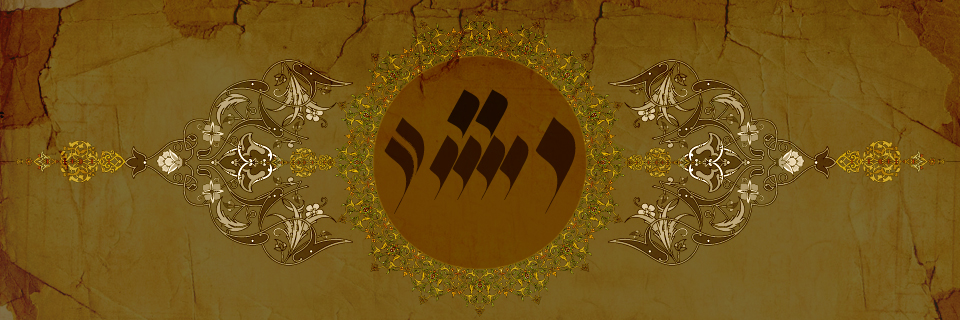Qualificative pronouns represent only a few features of an entity rather than the entire entity itself. These pronouns are determinative phrases in Persian.
a. Syntax
Native qualificative pronouns (like in other Indo-European languages) do not exist in Persian. In this role, determinativized modal adverbials appear as prepositional phrases with the preposition /ʧon/ (/ʧun/) چون (see 11•q.):
- For the close-up range, the prepositional phrase /ʧon in/ (/ʧun in/) چنین، چونین (with the original meaning “like this”) as well as its intensive form /in ʧon in/ (/in ʧun in/) این چنین، این چونین (see 7•۳•c.)
- For the far range prepositional phrase /ʧon ɒn/ (/ʧun ɒn/) چنان، چونان (with the original meaning “like that”) as well as its intensive form /ɒn ʧon ɒn/ (/ɒn ʧun ɒn/) آن چنان، آن چونان (see 7•۳•c.)
It appears that a kind of grammaticalization is fulfilled during the generation of these qualificative pronouns; they are not understood as prepositional phrases by modern Persian speakers, and predominantly have the following pronunciations:
- /ʧenɒn/ چنان, /ɒn ʧenɒn/ آن چنان
- /ʧenin/ چنین, /in ʧenin/ این چنین
b. Nominal Qualificative Phrases
Persian nominal determiner phrases with qualificative pronouns have the following features:
- They are always indefinite (other than nominal determiner phrases with quantificative pronouns).
To become indefinite, they are normally used with the enclitical article /-i/ or the pattern [NP[Dcardinal numeral /jek/] [NP[NPnoun phrase] [Denclitical article /-i/]]].
- They are always in the 3rd person.
- Their number corresponds with the number of their determinative focuses.
For example:
چنین کتابی /ʧon in ketɒb-i/، یک چنین انسانهایی /jek ʧon in ensɒnhɒ-i/
تو میخواهی یک چنین گوهری /jek ʧon in gævhær-i/ را به این ارزانی بفروشی؟!
دگر حور و پری را کس نگوید با چنین حسنی /ʧon in hosn-i/
که این را این چنین چشمست و آن را آن چنان ابرو
Hafez (14th Century AD)
شیرِ بی یال و دم و اشکم که دید؟!
این چنین شیری /in ʧon in ʃir-i/ خدا کِی آفرید؟!
Rumi (13th Century AD)
چنان کسی /ʧon ɒn kæs-i/، یک چنان دوستانی /jek ʧon ɒn dustɒn-i/
او مرا در یک چنان شبِ سردی /jek ʧon ɒn shæb-e særd-i/ از خانهاش بیرون انداخت.
اُذنِ مومن وحیِ ما را واعیست
آن چنان گوشی /ɒn ʧon ɒn guʃ-i/ قرینِ داعیست
Rumi (13th Century AD)
Such qualificative determiner phrases are used also without the enclitical article /-i/ in archaic idioms:
تیزهُش تا نیازماید بخت
به چنین جایگاه نگراید
Rudaki (9th and 10th Century AD)
هر کجا بینی این چنین کس را
التفاتش مکن! که هیچ کسست
Saadi (12th and 13th Century AD)
این چنین اکسیرها ز اسرارِ توست
این چنین میناگریها کارِ توست
Rumi (13th Century AD)
که چونین سخن نیست جز کارِ زن
به ویژه زنی کهاو بود رایزن
Ferdowsi (10th and 11th Century AD)
گر فزونی نپذیرد جز کاهنده
چه همی بایدت این چونین افزونی؟!
Nasir Khusraw (11th Century AD)
نظر کردن به درویشان منافیِّ بزرگی نیست
سلیمان با چنان حشمت نظرها بود با مورش
Hafez (14th Century AD)
Qualificative determiner phrases can also be nominalized in archaic idioms by means of deleting their determinative focuses:
درِ من چه کوبی؟! رهِ من چه گیری؟!
چو آرام گیرد دلت با چنانی /ʧon ɒn-i/
Farrukhi Sistani (10th and 11th Century AD)
چنانی /ʧon ɒn-i/ که از مادرِ پارسا
بزاید، شود بر جهان پادشا
Ferdowsi (10th and 11th Century AD)
c. Adjectival Qualificative Phrases
In Persian, qualificative pronouns can also be used as determinative phrases for gradation of adjectival phrases:
تو چنین فربه و آکنده چرایی؟ پدرت
هندوی بود یکی لاغر و خشکانج و نحیف
Labibi (10th and 11th Century AD)
ندانستم من، ای سیمینصنوبر!
که گردد روز چونین زود زایل
Manuchehri (10th and 11th Century AD)
چه اوفتاد و چه کردم گنه به جایِ تو من؟
چرا به جستنِ هجر این چنین مهیّایی
Suzani Samarqandi (12th Century AD)
مرا به کارِ جهان هرگز التفات نبود
رخِ تو در نظرم این چنین خوشش آراست
Hafez (14th Century AD)
زِ سیری مباش آن چنان شادکام!
که از هیضه زهری در افتد به جام
Nezami Gandjavi (12th and 13th Century AD)
چنان بیسایه، شد چونان بیآزرم
برِ چشمش جهان تاری شد از شرم
Fakhroddin Asad Gorgani (11th Century AD)

